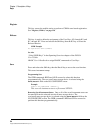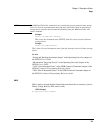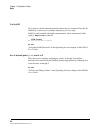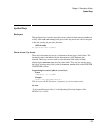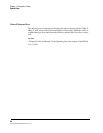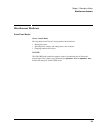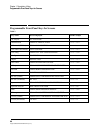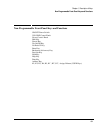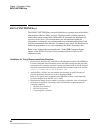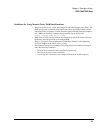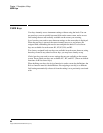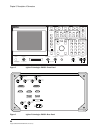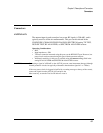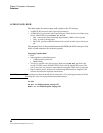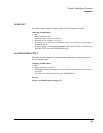
62
S:\agilent\e8285\REFGUIDE\MANUAL\keys.chp
Chapter 1, Description of Keys
DATA FUNCTIONS Keys
DATA FUNCTIONS Keys
The DATA FUNCTIONS keys can be divided into two groups; those which affect
measurements (Ref set, Meter, Average, High limit and Low limit), and those
which affect numeric entry fields (Increment
÷10, Increment set, Increment×10,
up-arrow, down-arrow). For measurements, the data functions enable the
programmer to change the way measurements are calculated and displayed, and
provide measurement limit detection. For numeric entry fields, the data functions
enable the programmer to set, scale, and change the field’s increment value.
Refer to the “Number Measurement Syntax” in the GPIB Command Syntax
chapter of the E8285A Condensed Programming Reference Guide for full
command syntax.
Guidelines for Using Measurement Data Functions
• Data functions are turned ON and OFF for individual measurements. The GPIB Data
Function commands must immediately follow the GPIB command for the individual
measurement. For example, to turn the Average data function ON for the AF Analyzer
distortion measurement, the following command string would be sent to the Test Set:
OUTPUT 714;"MEAS:AFR:DISTN:AVER:STAT ON"
• Attribute Units (AUNits) are used with the data functions to specify the units-of-
measure for numeric data which is read or set through GPIB.
Refer to “To Specify Units-of-Measure for GPIB Data Transfer” in
the Operating
Overview
chapter of the E8285A User’s Guide.
• Data function settings, such as number of averages or reference value, are retained if
the function is turned off. The setting values are initialized or changed under the
following conditions:
• The Test Set is turned off.
• The Test Set is preset.
• A saved register is recalled.



